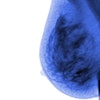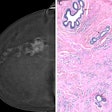Many members of the mammography community may disagree with the results of the recent Danish study questioning the effectiveness of breast imaging, but they are pleased that the information did not bring on an onslaught of public backlash.
"We haven’t had any kind of fallout from this study," said Judy Perotti, director of patient services at the Y-ME National Breast Cancer Organization, an advocacy group in Chicago. "I think the general media did a good job of putting this in context by not running a screaming headline. You almost need to be a statistician to understand this study."
Published in the January 8 issue of The Lancet, the contentious paper asked the question "Is screening for breast cancer with mammography justifiable?" Reviewing eight previous breast imaging trials for bias, authors from the Nordic Cochrane Center in Copenhagen concluded that there were too many inconsistencies in six of the eight studies conducted to render them valid. The researchers took issue with the randomization process, determining that many of the trials did not establish baseline characteristics, particularly age.
But the authors’ decision to disregard mammography because of an age discrepancy didn’t sit well with others experts.
"I was pretty appalled by the global dismissal (of breast imaging) based on one perspective," Perotti said. "It’s very important to use evidence-based medicine, but it seems to me that the conclusion they arrived at was unnecessarily extreme."
For example, the Danish researchers questioned the validity of the Gothenburg Breast Cancer Screening Trial and the Two-County Trial, both conducted in Sweden. The latter was set up in 1977, with 77,080 women ages 40-74 randomized to invitation for mammographic screenings, and 55,985 women randomized to no invitation (Swiss Surg 1999, Volume 5, Number 5, pp.199-204). The Gothenburg trial invited a total of 11,724 women aged 39-49 for screening (J National Cancer Inst Monogr 1997, Volume 22, pp.53-55).
The Lancet paper stated that randomization of the Gothenburg trial may have been inadequate because the women in the study group were "significantly younger" than those in the control group. Dr. Stephen Duffy, a senior scientist with the Institute of Public Health in Cambridge, U.K., worked on both trials.
"We do not accept the Danish researchers' assertion that the randomization of the Gothenburg study was severely flawed," Duffy said. "The tiny imbalance in the Gothenburg study was part of the design and has been adjusted for in analysis. The age imbalance in the Two-County study was published by us in 1989, with the age-adjusted results. These results showed that, age for age, there was a substantial benefit for invitation to screening in terms of a reduction in breast cancer mortality."
Additionally, the Danish analysis praised the controversial 1993 Canadian National Breast Screening Study, which cast doubt on the effectiveness of mammograms for women aged 40-49.
In a statement on behalf of the American College of Radiology, Dr. Daniel Kopans, director of breast imaging at Massachusetts General Hospital and a member of the ACR Breast Task Force, pointed out the problem with that trial.
"The Canadian randomization was not blinded. All women were examined first and they were then assigned to the screened group or control group on open lists. At least for the women ages 40-49, this resulted in a ‘statistically significant’ excess of women with advanced breast cancer allocated to the screening arm," Kopans said.
Kopans criticized the Danish authors for constructing "a series of unrelated arguments and exaggerating the significance of their findings." He took The Lancet to task for not contacting the authors of the studies in question prior to publishing a paper that could cause "potentially dangerous confusion" among patients.
Duffy also questioned the methods and motives of the Danish team. "We feel that there is an element of polemic in The Lancet paper, as evidenced by the…over-dismissive attitude to evidence of randomization problems," he said.
The Danish paper does have some value simply because it calls attention to the need for more thorough analysis of screening studies, said Dr. Karla Kerlikowske, an assistant professor in epidemiology and biostatistics at the University of California, San Francisco. Kerlikowske co-authored a study on mammograms for women over age 69 that was published in the December 8, 1999 issue of the Journal of the American Medical Association (1999; Volume. 282, Number 22, pp.2156-2163).
Kerlikowske said the study would have held more weight if the researchers had based their results on the ages of every individual woman from each trial.
"Maybe these studies weren’t randomized correctly, but I don’t think you can look at the information given in these studies and then say mammography isn’t justified. If they had gotten all the individual patient data, then they could have really looked at randomization," she said.
Kerlikowske added that she hopes this paper will inspire others to take a closer look at the various trials using more thorough information.
"I think this study justifies the need for some place where people can review individual patient data," she said. "With any screening test, everyone initially focuses on ‘Is there a benefit?’ Once they find that there is, they have to decide if the benefit is big enough to outweigh the potential harm. People often forget that you have to evaluate both sides of the equation."
By Shalmali Pal
AuntMinnie.com staff writer
January 17, 2000
Copyright © 2000 AuntMinnie.com


















